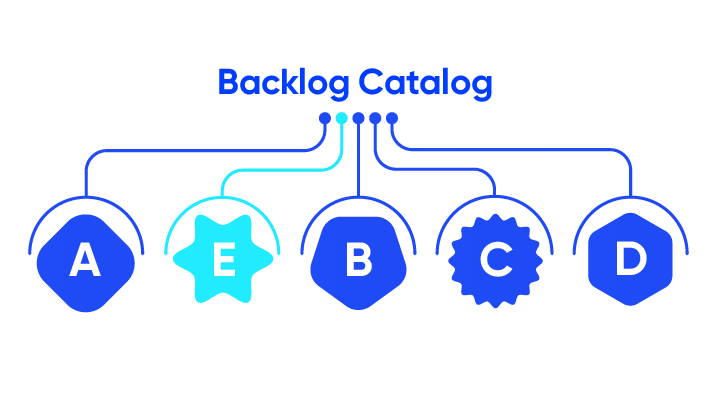
Here at Binalyze, as in any product team, one of our biggest challenges in product development is prioritization. The decisions about where to focus our energies and the general order of our work impact a large number of our teams.
As the VP of Product, I’m focused on our product development as a wider effort; it’s all centered on bringing a new product or a series of features to the market - devising how the collective efforts, spanning all the teams, will be mapped out and executed.
At Binalyze, this effort requires the involvement of various teams from Product, Engineering, QA, and Product marketing. We’re also supported by our Customer success teams helping and working alongside other customer-facing roles.
So, what’s Binalyze's approach to prioritization and, more specifically, our approach when we need to change something crucial?
Let’s quickly explore our product vision, strategy, and current priorities.
Prioritization is difficult and complex due to a whole range of different factors. Here’s what I think are some that are the most impactful:

There are always orders of magnitude more things that we wish we could do than we actually can do with the resources we have.
To give an example, we receive frequent customer requests; we could easily fill a few years of back-to-back development based purely on actioning these requests and doing nothing else.

The types of needs that are in our backlog are very different, and therefore, it’s difficult to compare them.
How do we compare apples to oranges or, in some cases, even bananas? Do we make our development life easier by refactoring how our multi-tenancy logic works, or do we introduce a new feature that is strategically more important in the long run?
Or, maybe we do this really cool but not-so-urgent feature that might help us close a commercially significant deal next month?

Changing priorities can be painful.
Product development isn’t a linear process like digging a ditch; it’s not something that starts the moment you grab your work gloves (when an engineer starts writing code) and doesn’t finish the moment you drop your shovel (when an engineer pushes their code to their repository).
Before work can start, there’s lots of preparation that’s needed to take place so that any new development is successful. That’s because we don’t want to build something that isn’t needed or doesn’t work the way our customers need it to.
So, many other people will be involved besides our engineers; as I mentioned above, we’ll have conversations with our customers before designing and testing the proposed solution.
Engineers do the technical planning to make sure it works well and can grow with our broader ambitions. We’ll do all of this to mitigate the risk of wasting our time on building something that doesn’t align with our vision and/or doesn’t help our customers with their specific pain points or needs.
Killing your darlings and how to decide what to do?
Changing priorities mid-task can lead to lost productivity and inefficiencies. It can also have a demotivating effect on the team.
Therefore, when we decide to pivot, it’s essential that we ensure that it’s genuinely the best decision for the long-term vision of the product.
In general, Binalyze’s prioritization framework is how we align our plans to the product vision and strategy that comes from the company vision.
It’s a bit like sailing a boat; when you’re navigating toward a new island, you’ll use your map.
Rarely can you sail in a truly straight line, as you’d draw on your ship's map. The reality is you’ll continually make small adjustments with your destination in sight. You’ll do this to catch the best winds, avoid shallow water and keep yourself from crashing onto rocks. It’s about having faith in your ship, its sails, and its crew to get you where you need to be.
On the good ship Binalyze we have our vision and strategy. This doesn’t map out all of our exact moves or features that’ll be needed along the way, so we’ve got to figure out the finer details daily. These considerations cover what makes sense tactically and how we can maintain the most efficient path to our prized destination.
And for Binalyze, that destination is having built something of extreme value, something that will help us conquer the DFIR market and, as a result, see our company grow the right volume of customers, levels of revenue and deliver a specific amount of success.
This kind of progress tends to look a bit like a hockey stick, so every day, you’re working towards that eventual sudden uptick of high growth, our ultimate destination.
Sometimes potentially painful changes in priorities are needed. Our ship is bobbing along nicely; we’re heading towards the island on our map, towards the realization of our company vision; there’s the high growth that every startup dreams of.
Yet, the captain pulls out their telescope, appraises the direction of travel, and unexpectedly shouts, “Sharp left”. Why would we ever take a detour and make changes in our priorities and plans?
The simple answer is fast growth, which is an even more important bounty than high growth.
Fast growth that can be gained quickly is beneficial for a whole host of reasons. It gives us even greater resources to allow us to continue our journey and assist in the realization of our ultimate vision. A bigger team means getting there faster because the more people tapping into the fast growth, the greater the progress.

In practical terms, this means that the order of items in our backlog changes. Let’s imagine yesterday it was A, B, C, D, E, above. And then today, it’s A, E, B, C, D, like below.
Without understanding our approach to prioritization, this reorganization might feel random or plain crazy or not fully thought through. How could something that was the 5th in line jump so many places in our priority order?
Fast growth is the answer, and it’s important to remember that whilst we’re changing the order of work, we’re still building towards the same end goal.
We’d always planned to build E, but we’re building it sooner to make sure we can continue building or even accelerate the building of our other steps.
Our approach is whenever we decide to develop something new specifically to close a deal, we only build it if we know it’s something that aligns with our ultimate product and company vision.
So did I write this long nautical-themed blog to slowly warm everyone up to some changes to our roadmap?
No, I did not.
Our top priorities for Summer 2023 remain the same as before.
- Constant improvements to the investigation experience so that we can make one of the most time-consuming parts of an investigation more effortless.
- Navigation and UI revamp to help our users to discover all the value contained within AIR so that they can maximize the value they get.
- A new and improved multi-tenancy solution so that we could reduce the complexities of some of our development efforts and better align with the way our target customers organize their work.
- New platforms support, to expand our supported platforms to a key platform used in the financial sector (we’ll share specifics very soon), and to deliver on a commitment we made to a customer when signing a deal.
- Become the best evidence collector for macOS, launching new and significant macOS development in the Autumn. Because collecting good and relevant evidence from all common platforms is something that is a core value at Binalyze.
It’s all about the fine balancing act of us getting us to our X on the map. We’ll continue to evaluate the signals, avoid troubled waters and make changes where it makes the most sense to us, being true to the needs of our customers and to our company vision.
To find out more about Binalyze’s current roadmap, speak to one of our sales team or to set up a free 14-day trial of the fastest and most comprehensive DFIR solution on the market; click the link below:










